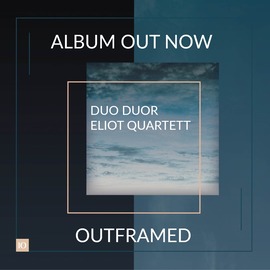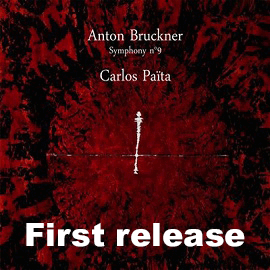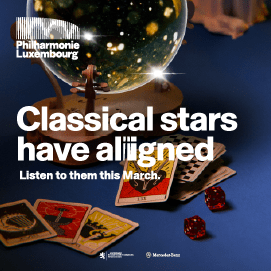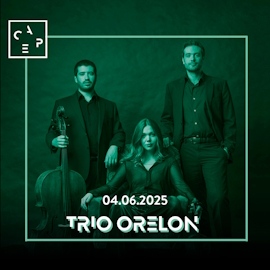Edward Garner ist mit dieser Aufnahme eine herausragende Interpretation der Wagner-Oper gelungen. Gerald Finley ist ein sehr guter Holländer. Er mag nicht die mächtigste oder schwärzeste Stimme für die Rolle haben und bleibt im Volumen neben Davidsen manchmal etwas zu schwach, doch mit einer exzellenten Phrasierung und Deklamation lässt er uns nicht nur jedes Wort verstehen, er färbt und nuanciert so großartig, dass alles deutlich wird, was den Holländer ausmacht, Verzweiflung, Einsamkeit, Schmerz und Sehnsucht.
Neben ihm ist Lise Davidsen eine nicht weniger herausragende Senta, stimmlich überragend und mit totaler Kontrolle der Vokalführung. Sie besticht vor allem durch ihre Darstellung. Davidsens Senta ist eine starke junge Frau, sehr entschlossen und angetrieben von eine fanatischen Willen, dem Holländer beizustehen, ja ihm durch ihren Tod zu retten. Diese Kraft hebt sie über ihre Umgebung hinaus lässt sie gewissermaßen zu einem Symbol für weibliche Emanzipation werden.
Nehmen wir doch nur eine große Ballade Johohoe. Sie beginnt sehr ruhig, fast verklärt, ehe die silbern gefärbte Stimme Kraft sammelt, um aber auch weiterhin sehr differenzierend zu singen, immer nahe am Text, dessen Bedeutung sie wunderbar auslotet.
Brindley Sherratt singt einen gutmütigen Daland, tut sich aber mit dem Deutschen etwas schwer und verfärbt ständig die Vokale. Aber die Stimmführung an sich ist ganz akzeptabel, die Qualität des Organs auch.
Stanislas de Barbeyrac singt einen guten Erik, und Eirik Grøtvedt macht als Steuermann mit einer schön timbrierten und gut geführten, sensiblen Tenorstimme einen guten Eindruck.
Dass diese Holländer-Aufnahme rundum so überzeugend ausgefallen ist, liegt auch an Edward Gardner und am Orchester und Chor der Norwegischen Nationaloper. Schon in der hinreißenden Interpretation der Ouvertüre zeigt das Orchester, dass es in dieser Oper die nötige Kraft, den Schwung und die tonmalerische Qualität entwickeln wird, um Wagners Musik hervorragend zu spielen. Es ist ein im besten Sinne nervöses, spannungsvolles und hochpräsentes Musizieren. Das Orchester und der Chor klingen prächtig, und da ihr Musizieren optimal von der Tontechnik eingefangen wurde, ist dies für mich eine der besten Aufnahmen des Holländers in meiner Kollektion, in der Klemperer, Dorati und Knapperstbusch die Spitzenpositionen einnehmen.
Edward Garner has achieved an outstanding interpretation of the Wagner opera with this recording. Gerald Finley is a very good Dutchman. He may not have the strongest or darkest voice for the role, and sometimes he is a little too low in volume next to Davidsen, but with excellent phrasing and declamation he not only makes every word understandable, he colors and nuances so beautifully that everything that makes up the Dutchman – despair, loneliness, pain and longing – becomes clear.
Next to him, Lise Davidsen is a no less outstanding Senta, with an outstanding voice and total control of the vocal line. She captivates above all with her portrayal. Davidsen’s Senta is a strong young woman, very determined and driven by a fanatical will to stand by the Dutchman, even to the point of saving him by her death. This strength elevates her above her surroundings and makes her a symbol of female emancipation.
Let’s take just one great ballad, Johohoe. It begins very quietly, almost transfigured, before the silvery voice gathers strength to continue singing in a much differentiated way, always close to the text, whose meaning she explores wonderfully.
Brindley Sherratt sings a good-natured Daland, but struggles a bit with the German and keeps changing the color of the vowels. But the vocal line itself is quite acceptable, as is the quality of the voice.
Stanislas de Barbeyrac sings a good Erik, and Eirik Grøtvedt makes a good impression as Steuermann with a beautifully timbred and well-managed, sensitive tenor voice.
Edward Gardner and the orchestra and chorus of the Norwegian National Opera are also to be thanked for making this recording of The Dutchman so convincing. Already in the ravishing interpretation of the overture, the orchestra shows that it will develop the necessary power, momentum and tone quality in this opera to play Wagner’s music excellently. It is a nervous, exciting and highly present music-making in the best sense of the word. The orchestra and chorus sound splendid, and since their music-making is captured perfectly by the sound engineering, this is for me one of the best recordings of the Dutchman in my collection, in which Klemperer, Dorati and Knapperstbusch occupy the top positions






















